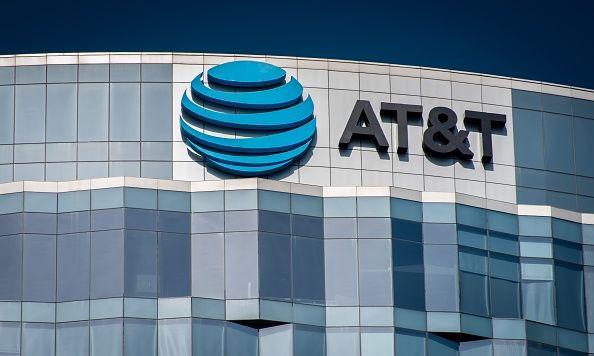AT&T TV Looks A Little Too Much Like Traditional Cable

The rise of streaming video has been bad news for legacy pay-TV services. Cable and satellite providers can slow the bleeding with internet and phone bundling, but the trends are clear: Legacy pay-TV is losing ground quarter after quarter, year after year. If multichannel live TV is to survive at all, it will have to do so in the streaming world.
What will that look like? Early efforts like Dish's (NASDAQ:DISH) Sling TV and Sony's PlayStation Now offered a vision of a slimmed-down channel bundle with an ultra-cheap price tag. They and their competitors were soon known as "skinny bundles." AT&T (NYSE:T) has tried its hand in that skinny bundle market, and it has not always gone well. Now, AT&T is taking a different tack with a bundle that isn't so skinny at all.
The service is called AT&T TV, and it's a multichannel streaming service. But that's where similarities to Sling TV and the rest of the skinny-bundle gang fade -- and similarities to old-school cable and satellite packages emerge. Rather than going skinny, AT&T TV is embracing the channel overload that DirecTV Now once rejected: AT&T TV's entry-level bundle, Entertainment, includes more than 70 channels. That's more than what comes with the larger of the two bundles available through skinny bundle AT&T Now (the rebranded DirecTV Now).
The price is cable-like, too. The Entertainment and Ultimate packages have standard monthly prices of $93 and $135, respectively. But customers can get a very cable-like discount in the form of an introductory rate tied to a two-year contract. That brings the cost down to $59.99 per month for the cheaper plan -- for the first year, of course, and then it's $93 per month unless you cancel and pay an early termination fee.
This isn't the future of live TV streaming
AT&T TV is very different from other live TV streaming services, but it doesn't solve any of the problems that those services have faced. It's still a cable-like live TV streaming service in a world in which on-demand content is king. It's still a relative unknown, and it can't be bundled with landline phone service -- something that, along with high non-bundle internet costs, has helped cable TV survive this long. What AT&T does change it makes worse: Instead of the creeping price points of ever-pricier skinny bundles, AT&T TV is sporting a jaw-dropping price from the start. Plus, it brings back cable's hated long-term contracts.
But AT&T doesn't necessarily think that AT&T TV is the future of live streaming TV -- or that it needs to be. There's another reason for this service to exist.
The real reason AT&T TV is a thing
In a research note, UBS Securities analyst John Hodulik was pessimistic about AT&T TV's potential to hook cord-cutters, saying that the service on its own "is unlikely to drive a dramatic shift in sub trends." But Hodulik saw another reason for AT&T TV to exist: It "should lower costs in [AT&T's] Entertainment segment while providing a boost to addressable advertising."
In other words, delivering pay TV in this form is cheaper for AT&T than using legacy delivery methods like satellite. AT&T is still in the infrastructure game, of course (and the company is even bundling AT&T TV with its internet services), but now it is cutting some costs by getting some customers to switch to OTT delivery for their pay-TV services. AT&T's pay-TV subscribers will almost certainly continue to dwindle, but at least AT&T will be serving them more cheaply.
As for addressable advertising, that means showing different ads to different households that are watching the same program. That's not feasible with legacy pay-TV services in most cases -- if you and your neighbor are both watching the big game, you'll both see the same ads. But with OTT delivery, it's not too tough to swap in different ads for different streams. And these ads can be targeted to homes based on geographic or demographic information -- or on the information AT&T gleans from your viewing habits on its AT&T TV app.
Sensible enough
AT&T TV is not exactly a world beater, but it's not quite as out of touch as it appears at first glance. It's best understood not as a competitor to Sling TV and other skinny bundles but as a way to make the most of AT&T's rough position as a legacy pay-TV provider.
Stephen Lovely owns shares of AT&T. The Motley Fool has no position in any of the stocks mentioned. The Motley Fool has a disclosure policy.
This article originally appeared in The Motley Fool.




















